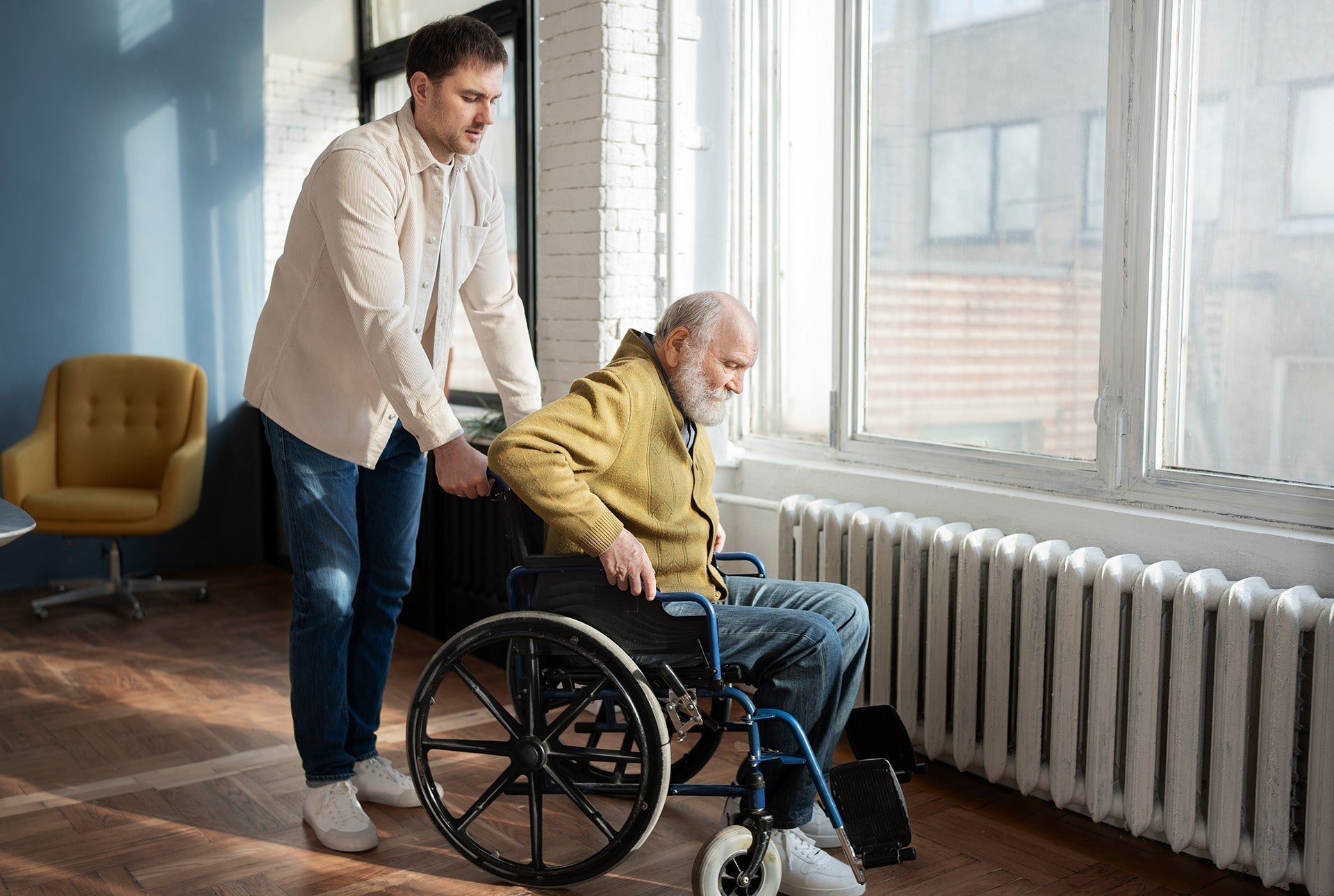Article originally published by Bunzl Australia
Incontinence in men is a lot more common than people think. It’s estimated that 1 in 5 men will experience incontinence at some point in their lives. While most sufferers are older than 65, younger men can also deal with involuntary loss of urine and faeces for several reasons.
What Causes Incontinence in Men?
Incontinence in men is most often attributed to a benign enlargement of the prostate, but medication use, or a urinary tract infection can also lead to incontinence issues.
- Incontinence in men is usually the result of prostate problems.
- Most common forms of incontinence in men are dripping or overflow incontinence.
Symptoms of Incontinence in Men
There are various symptoms of urinary problems in men, and they will differ from person to person: needing to urinate more frequently, difficulty urinating, and dripping are a few examples. Dripping is a common symptom caused by a weakening of the bladder or pelvic floor muscle or bad bathroom habits.
In cases of benign enlargement of the prostate, overflow incontinence can occur. Overflow incontinence is a condition where the urethra is closed blocked stopping release via urination. Eventually the pressure becomes so high within the bladder that the urine “overflows”.
Stress incontinence in men, usually defined by the loss of urine during exertion, is common after prostate surgery.
Male Incontinence and Taboos
Male incontinence is still considered a taboo subject in mainstream circles. Many men prefer not to talk about or address incontinence with medical professionals, resulting in unnecessary and prolonged incontinence issues. This can also end up aggravating the symptoms even more. By seeking help in time, the chances of making incontinence go away or decreasing the symptoms are greater.
Prostate Problems and Incontinence
Incontinence in men is often the result of prostate problems. More than thirty percent of men over the age of 65 will experience prostate problems at some point in their lives. In most cases, prostate problems arise due to benign enlargement of the prostate, which is the result of hormonal changes associated with aging. The growing prostate gland compresses the urethra, making it difficult for men to urinate and resulting in the bladder eventually overflowing.
Although prostate problems and incontinence are usually innocent, it is important to seek help as soon as possible. A doctor or general practitioner can determine the cause of incontinence and provide guidance on products, health insurance, specialist referrals, and symptom relief to make the problem more tolerable.
Treatment Options for Incontinence in Men
The treatment of incontinence in men depends on the cause of the problem. A trip to the doctor to determine the type of incontinence is essential. Keeping a urinary diary, laboratory examination of the urine and physical examination can help determine a diagnosis.
- Bladder training can help prevent incontinence in men.
- Stress incontinence or exercise incontinence in men can be treated with pelvic floor exercises and physiotherapy.
- An adapted diet can make an important different. Excess weight can make incontinence symptoms worse.
- Drinking alcohol, caffeinated beverages such as coffee and tea, and eating hot peppers can also increase the risk and symptoms of incontinence.
- Pay attention to fluid intake. Not drinking enough can cause too concentrated urine, resulting in an irritated bladder. 1.5 liters to 2 liters of water per day for men is the recommended minimum.
Abena Man - Formula 2, SKU: SA1000021336
- If pelvic floor exercises do not help and symptoms are severe, surgery may be an option.
- The preferred treatment for (benign) enlargement of the prostate is usually surgery.
Incontinence After Prostate Surgery
For some types of incontinence and urinary problems in men, a solution may be surgery to remove part of the prostate. After surgery, some men experience temporary stress incontinence. Because a pat of the sphincter muscle is removed during a prostate procedure, it functions less well during the first weeks after an operation. Usually, these problems disappear within a year after surgery. Pelvic floor exercises and pelvic floor physiotherapy can accelerate the recovery.
Product Recommendations for Men with Incontinence
As many women are familiar with using sanitary pads or liners, products is often less of a hurdle for women to overcome than men. Although some incontinence products can be worn by both women and men, Abena also has products specifically designed for men. Thanks to the anatomical shape and protection at the front, these incontinence products are specifically designed for men.


